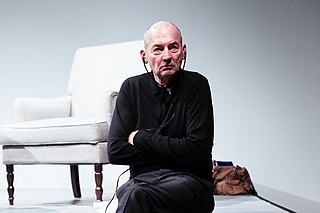
Remment Lucas Koolhaas is a Dutch architect, architectural theorist, urbanist and Professor in Practice of Architecture and Urban Design at the Graduate School of Design at Harvard University. He is often cited as a representative of Deconstructivism and is the author of Delirious New York: A Retroactive Manifesto for Manhattan.

Daniel Libeskind is a Polish–American architect, artist, professor and set designer. Libeskind founded Studio Daniel Libeskind in 1989 with his wife, Nina, and is its principal design architect.
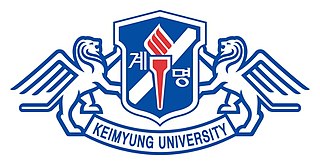
Keimyung University, abbreviated as KMU or Keimyung (啓明), is a private university located in Daegu, the fourth largest city in South Korea. The university takes roots from Jejungwon founded in 1899. The higher education started in 1954 with the support of the leaders of the Northern Presbyterian Church of the U.S. as a Christian university. KMU is composed of three campuses in the city of Daegu, South Korea. They are named for their locations within the city; Daemyeong, which is near the downtown area, Seongseo, which is in the western part of the city, and also Dongsan campus which includes Dongsan Medical Center. The university's Seongseo campus is known as one of the most beautiful campuses in South Korea.
Thom Mayne is an American architect. He is based in Los Angeles. In 1972, Mayne helped found the Southern California Institute of Architecture (SCI-Arc), where he is a trustee and the coordinator of the Design of Cities postgraduate program. Since then he has held teaching positions at SCI-Arc, the California State Polytechnic University, Pomona and the University of California, Los Angeles (UCLA). He is principal of Morphosis Architects, an architectural firm based in Culver City, California and New York City, New York. Mayne received the Pritzker Architecture Prize in March 2005.

Denise Scott Brown is an American architect, planner, writer, educator, and principal of the firm Venturi, Scott Brown and Associates in Philadelphia. Scott Brown and her husband and partner, Robert Venturi, are regarded as among the most influential architects of the twentieth century, both through their architecture and planning, and theoretical writing and teaching.

The architecture of metropolitan Detroit continues to attract the attention of architects and preservationists alike. With one of the world's recognizable skylines, Detroit's waterfront panorama shows a variety of architectural styles. The post-modern neogothic spires of One Detroit Center refer to designs of the city's historic Art Deco skyscrapers. Together with the Renaissance Center, they form the city's distinctive skyline.

Marco Casagrande is a Finnish architect, environmental artist, architectural theorist, former mercenary, writer and professor of architecture. He graduated from Helsinki University of Technology department of architecture (2001).
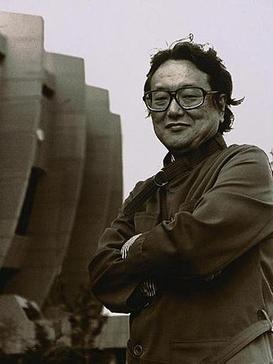
Kim Swoo Geun was a prominent South Korean architect, educator, publisher and patron of artists. Along with architect Kim Joong Up (김중업), he is recognised as a significant contributor in the history of Korean architecture. With his support for diverse art genres of Korean culture, he was referred to as Lorenzo de Medici of Seoul by TIME in 1977.

Bjarke Bundgaard Ingels is a Danish architect, founder and creative partner of Bjarke Ingels Group (BIG).

Wilhelmus "Winy" Maas is a Dutch architect, landscape architect, professor and urbanist. In 1993 together with Jacob van Rijs and Nathalie de Vries he set up MVRDV.
Wiel Arets is a Dutch architect, architectural theorist, urbanist, industrial designer and the former Dean of the College of Architecture at the Illinois Institute of Technology in Chicago, in the United States of America. Arets was previously the 'Professor of Building Planning and Design' at the Berlin University of the Arts (UdK), Germany, and studied at the Technical University of Eindhoven, graduating in 1983. The same year later he founded Wiel Arets Architects, a multidisciplinary architecture and design studio, today with studios in Amsterdam, Maastricht, Munich, and Zürich. From 1995-2002 he was the Dean of the Berlage Institute in Rotterdam, where he introduced the idea of 'progressive-research' and co-founded the school's architectural journal named HUNCH.
The Urban Hive is a building designed by architect In-Cheurl Kim, located at the address of 200-7 Nonhyun-dong, Gangnam-gu in Seoul, Korea. The building is called the Urban Hive because of its unusual honeycomb exterior structure. This honeycomb motif is not simply aesthetic, this unique method of supporting the structural weight of the building with the honeycombed concrete exterior imparts unique benefits for the interior spaces of the building.
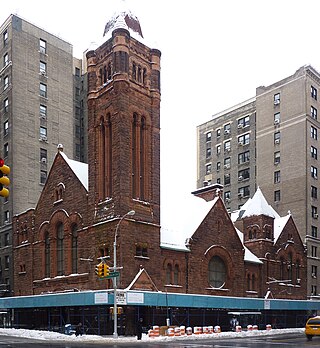
West-Park Presbyterian Church is a Romanesque Revival Presbyterian church located on the corner of Amsterdam Avenue at 86th Street on the Upper West Side of Manhattan in New York City. It consists of a main sanctuary and chapel.
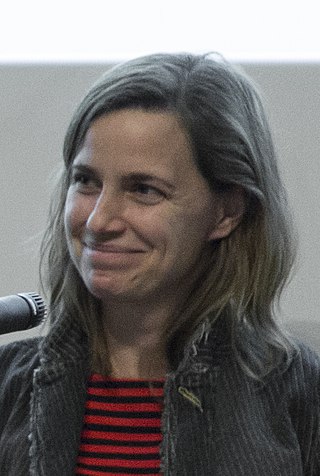
Kate Orff, RLA, FASLA, is the founding principal of SCAPE, a design-driven landscape architecture and urban design studio based in New York. She also is the director the Urban Design Program (MSAUD) at Columbia University's Graduate School of Architecture, Planning and Preservation and co-director of the Center for Resilient Cities and Landscapes. Orff is the first landscape architect to receive a MacArthur Fellowship.
George Baird is a Canadian architect, scholar, and architectural educator. He is widely recognized for his roles as: professor at the Royal College of Art and the Architectural Association School of Architecture, professor and director at Harvard University Graduate School of Design, as well as professor, chair and dean at the University of Toronto Faculty of Architecture, Landscape and Design. Baird's contributions to the disciplines of architecture and urban design extend from his professional practice, Baird Sampson Neuert Architects, to his theoretical publications on the subject of urban public space. His influential work and passion for architectural academia earned him the 2012 AIA/ACSA Topaz Medallion for Excellence in Architectural Education.

Seung H-Sang is a South Korean architect who studied at Seoul National University and Technische Universitaet in Wien. After working for Kim Swoo-geun from 1974 to 1989, he established his own office IROJE architects&planners in 1989.

Paju Book City (파주출판도시), located in Gyoha-eup, is a cultural complex entirely devoted to the creation, publication, merchandising and sales of Korean books. The "city" belongs to Korea's Ministry of Culture, Sports, and Tourism. Paju Book City is home to 250 publishers with over 10,000 workers. It covers the entire process of publishing from planning to printing and distribution and is home to a large number of book cafes and bookstores.

Jun Itami is an internationally renowned Korean-Japanese architect. He was born in Tokyo 1937 to Korean parents and gained his degree in architecture at Musashi Institute of Technology in 1968. Itami Jun spent his childhood in Shizuoka, Japan and entered the world of architecture by traveling and encountering many other artists. With profound insight into objects, he learned and expressed architecture with the physical senses of touch and drawing as his medium. In the homogeneous industrial society, Itami Jun sought to practice contemporary architecture with an anti-modern bent, emphasizing purity of architecture and material, and pursuing heavy primitive architecture with a sense of rawness in the material. Itami Jun’s Jeju projects in his late years demonstrate the mature beauty of his architecture.
Alessandra Cianchetta is an Italian architect, designer, artist, curator, urban strategist and author. Cianchetta is the founder and director of AWP AWILDC. She formerly co-founded AWP France of which she is currently shareholder. Her achievements include a masterplan for developing an area of 161 hectares in Paris's La Défense business district.

Jinjoon Lee FRSA is a professor, sculptor, new media artist and creative director exploring the liminoid experience of utopian space ideologies with new technologies.















